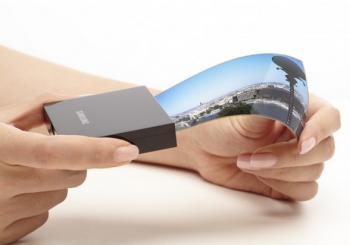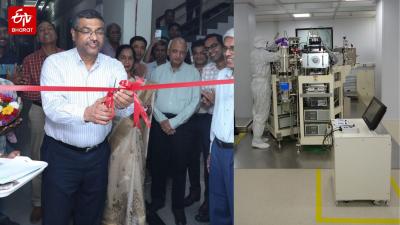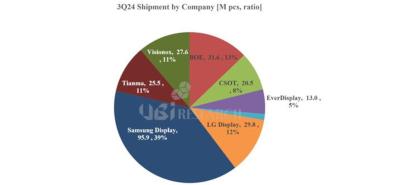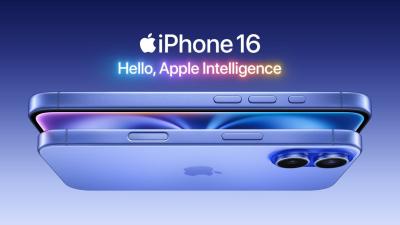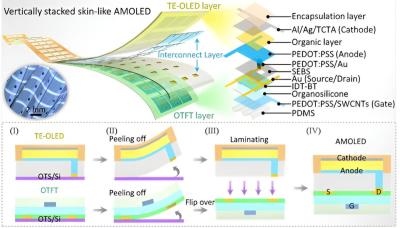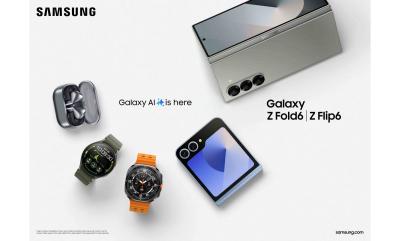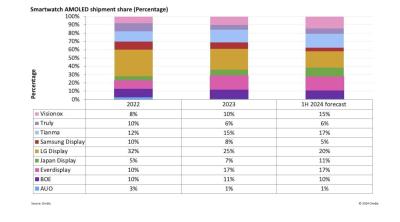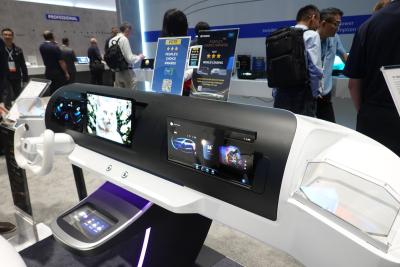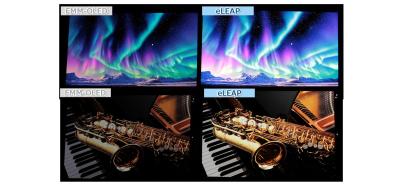Wearable OLEDs - Introduction and Latest Industry News
What are wearables?
Wearable computers, also called ‘wearables’, are technological devices that can be worn as clothing or accessories. Some wearables are based on relatively simple technology, similar to a scaled-down desktop computer, but some involve innovative technologies. Wearables include different products, such as fitness bands, wearable headsets, smart watches, healthcare monitoring and displays embedded in textiles.
The wearables market is diverse, but faces similar challenges like minimizing size and weight of components, deciding on optimal display location, choosing suitable services and applications to provide and balancing cost-to-price ratios. Most devices commercial today are either fitness bands or smartwaches, and VR/AR HMDs.
What is an OLED?
OLED is a light-emitting diode built from thin films of organic electroluminescent material sandwiched between electrodes. OLED devices emit light when current is run through them, and are used to develop display and lighting panels. OLED screens are thinner, lighter, more efficient and offer better performance and color quality than other existing technologies.
OLEDs divide into 2 groups: AMOLEDs and PMOLEDs, which refers to how the screen is addressed by the electronics of the device. Simple wearables such as fitness bands sometimes adopt PMOLED displays, while smartwatches and VR headsets opt for AMOLEDs. Here's more information about AMOLED vs. PMOLED technologies.
The OLED wearables market
OLED displays are very popular in the wearables market - thanks to the great image quality, the low power consumption and to the design possibilities enabled by flexible OLEDs. Today OLED is the dominant wearable display technology, and most high-end smartwatches, fitness bands adopt OLED displays, including both Apple's and Samsung's smartwatch ranges. Here's our comprehensive list of wearable devices that use OLED displays.
India inaugurates a new AMOLED research center at IIT Madras
The Indian Institute of Technology Madras (IIT Madras) has inaugurated a new research center dedicated for the development of AMOLED technologies. The new AMOLED Research Centre (ARC) is a national centre of excellent that is funded by the Government's Ministry of Electronics and Information Technology (MeitY), by the Indian Defence Research and Development Organisation (DRDO), and Tata Sons.
The goal of this new center is to help India's display manufacturing industry. It will focus on AMOLED displays for wearables, smartphones, and tablets. Researchers at the ARC will also engage in research into OLED TVs, OLED lighting and OPVs.
UBI: OLED shipments increase in Q3 2024, mostly driven by increased shipments by LG Display and Everdisplay
UBI Research says that shipments of small OLED panels rose to 247 million units, up 7.8% from the previous quarter (and up 32.6% from Q3 2023), mainly driven by increase in shipments by LG Display and Everdisplay.
LG Display shipped 17.6 million smartphones panels in the quarter, up 64% from Q2 and 12.2 million wearable OLED panels (up 147%) - thanks to strong shipments to Apple. In total LGD's AMOLED shipments grew 74% quarter to quarter, and 115% from last year. UBI expects LGD to continue and increase its shipments in Q4. The company is almost at full capacity and UBI says the company may decide to expand the capacity at one of its existing 6-Gen fabs.
Apple announces its 2024 iPhone 16 series, and the new Apple Watch Series 10, all with AMOLED displays
Yesterday Apple announced its 2024 iPhone 16 series, and its latest smartwatch devices - all based on OLED displays. We'll start with the the iPhone 16 that offers a 6.1" 2,000 nits (HBM) 1179x2556 Super Retina XDR LTPS AMOLED, while the iPhone 16 Plus offers a larger 6.7" 1290x2796 display. Both phones are based on Apple's latest 3nm A18 chipset offering improved performance and AI support.
The iPhone 16 Pro has a more advanced 6.3" 120Hz 2,000 nits (HBM) 1206x2622 LTPO Super Retina XDR OLED. The 16 Pro Max offers a larger 6.9" 1320x2868 AMOLED. These new phones are based on Apple's 3 nm A18 Pro chip, offer a "huge leap in battery life", support Apple Intelligence and feature new a main camera.
Google launches three new smartphones, a foldable phone and a new smartwatch all powered by AMOLED displays
Google announced five new devices, all powered by AMOLED displays. We'll start with the Pixel 9 smartphone series, with the plain Pixel 9 offers a 6.3" 120Hz 2,700 nits (peak) 1080x2424 AMOLED display, a Google Tensor G4 chipset, 12GB of RAM and 256 GB of storage. The Pixel 9 Pro offers a 6.3" 3,000 nits (peak) 120Hz 1280x2856 LTPO AMOLED, and up to 16 GB of RAM and 1 TB of storage. The Pixel 9 Pro XL offers a similar but larger display - 6.8" 1344x2992 LTPO AMOLED.
Google's Pixel 9 Pro Fold smartphone is based on a 8" 120Hz 2,700 nits (peak) 2076x2152 foldable LTPO AMOLED display, and an external 6.3" 120Hz 1080x2424 AMOLED. The Pixel 9 Pro Fold is powered by a Google Tensor G4 chipset, and offers up to 16GB of RAM and up to 512GB of storage.
Researchers develop an OLED-on-OTFT process to create high aperture wearable OLED devices
Researchers from China's Northeast Normal University developed a new integration strategy (called “discrete preparation-multilayer lamination”) that enables the deposition of OLED devices directly on top of OTFT transistors, to enable high-aperture wearable skin-patch OLED devices.
The new method starts with the preparation of the different layers on different substrates to avoid chemical and physical damage caused by process interferences, and then the transfer of the OLED devices onto the OTFT transistors. The researchers say that the resulting AMOLED display offers a high apreture ratio (83%), high mobility
Samsung announces the Z Flip6 and Z Fold6 foldable smartphones, and two new OLED wearables
Samsung announced today four new devices - two foldable smartphones, and two smartwatches, all with AMOLED displays. All of these devices will ship on July 24.
First we have the latest clamshell smartphone, the Galaxy Z Flip6 - that has a foldable 6.7" 120Hz 2,600 nits 1080x2640 LTPO AMOLED display. It also has a 3.4" 720x748 Super AMOLED cover display.
Omdia: adoption of OLEDs in smartwatch applications grows to 37% of the market
Omdia says that it expects the global smartwatch display market to reach 359 million units in 2024 (up from 259 million units in 2022). OLEDs hold a 37% market share (132 million units).
Omdia says that the leading smartwatch OLED producers, in the first half of 2024, are LG Display (Apple's main supplier), Everdisplay and Tianma - which together hold a 53% market share. China-based wearable OLED production accounts to 64% of the total market.
Tianma shows its latest OLEDs and MicroLEDs at Displayweek 2024
China-based Tianma had an impressive booth at Displayweek 2024, showing numerous OLED and microLED displays and prototypes.
For the automotive market, Tianma showed three new display prototypes. First up is a 13" slidable OLED, with an embedded touch panel, aimed towards car dashboards or center controls.
Japan Display to start producing eLeap laptop displays at its 6-Gen Mobara fab, ahead of schedule
In 2022, Japan Display (JDI) announced that it has developed a "historic breakthrough in display technology" - a new OLED deposition process which they refer to as eLEAP, that is said to be cost effective and can be used to create freeform OLEDs that are brighter, more efficient, and longer lasting compared to OLEDs produced using mask evaporation (FMM).
JDI is planning to establish a 8.7-Gen eLEAP fab in China, and it is also building a smaller-scale 6-Gen eLEAP production line in Mobara, Japan. The company announced that the 6-Gen Mobara fab is advancing ahead of schedule, and production of eLEAP panels will begin before the end of 2024. JDI developed 14" laptop panels that are three times brighter than other OLEDs (at 1,600 nits), and is also targeting smartwatches, smartphones and automotive displays. JDI is also looking into adopting a tandem structure, to increase brightness even further to 3,000 nits.
Apple develops a higher-efficiency LTPO backplane by adopting IGZO in the driving TFT
Apple was the first company to develop LTPO backplanes and it adopted this innovative and energy-efficient backplane technology back in 2018 in the Watch Series 4. LTPO combines Oxide-TFT and LTPS, by using the IGZO in some of the switching TFTs and LTPS in the remaining switching TFTs and all the driving TFTs. LTPO can reduce the power consumption by 5-15%, and enables variable refresh rate.
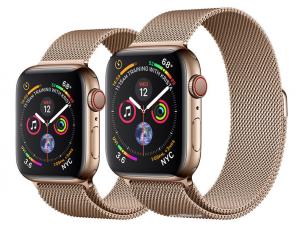
According to reports from Korea, Apple developed its 2nd-Gen LTPO backplane technology, that uses the IGZO in all the driving TFTs, and uses LTPS only in the remaining switching TFTs. This leads to higher efficiency compared to the first-generation LTPO backplane.
Pagination
- Page 1
- Next page
